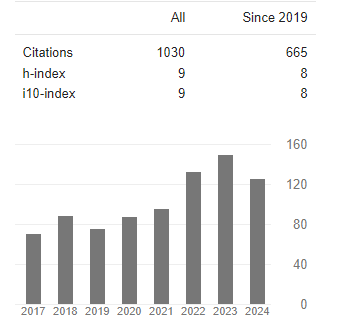Higher Omicron JN.1 and BA.2.86.1 Coronavirus Transmission Due to Unique17 MPLF Spike Insertion Compensating 24LPP, 69HV, 145Y, 211N and 483V Deletions in the Spike
Abstract
Asit Kumar Chakraborty
Mutation, deletion and insertion in the spike likely select RBD in a favorable 3-D structure to interact with ACE-2 receptor of human cells for coronavirus entry. Our goal is to characterize the newly spreading JN.1 subvariant and related omicron coronaviruses. BLASTP search found a 17 MPLF four amino acid insertion in omicron BA.2.86 and BA.2.86.1 subvariants and its precedent JN.1 subvariant which had unique L452S (L455 in Wuhan) spike mutation. The JN.1 variant also contained 2375SGF deletion in ORF1ab, 24LPP, 69 HV, 145 Y, 211 N ( 208N in BA.2) and 483 V ( 480 V in BA.2) deletions in the spike, 31 ERS deletion in N-protein and 26nt deletion in 3’-UTR (NC_045512.2). Many unique JN.1 spike mutations (242N=H249N, 261D=A268D, 352T=K360T, 400K=R407K, 442H=P449H, 449W=L456W, 474K=N485K, 480K=A488K and 566V=A574V) might be also important. The BLASTN search with insertion oligo found over 4984 JN.1 related sequences (10.1.2024) in the NCBI Database and were well distributed in America, Europe and Japan. Although, JN.1 acquired the 69HV deletion lately but did not generated from BA.4 or BA.5 lineages and it was solely generated from BA.2.86 variant. Swiss-Model detected a wing structure with basic amino acid in the middle of tripartite spike of JN.1 and important ACE-2 first interacting surface amino acids were changed. The small M protein of JN.1 had D3H, A63T and A104V mutations but Swiss Model showed no gross change in 3-D structure. Further, four JN.1 specific ORF1ab polyprotein mutations were detected: T170I mutation in nsp1 as well as D1600N, K1973R mutations in nsp3 protease and R3821K mutation in nsp6. Astonishingly, after a long journey of XBB.1.5.1 to XBB.1.5.100 subvariants spread, a sudden five amino acids deletion (176 EGKEG and180 EGKQG in Wuhan) in the spike of XBB.1.5.103 subvariant was found. The ORF8 immune-regulatory protein expression was abolished in all XBB.1 subvariants including XBB.1.5.103 and XBB.1.16.23 as expected due to termination codon mutations (AAA=TAA, CAA=TAA, GGA=TGA). But such ORF8 gene mutation (GGA=TGA) was also found in ongoing dominated JD.1.1, FL.1.5.1, HV.1 and EG.5.1.1 subvariants, derived from XBB.1 lineage. The FL.1.5.1 variant also has 82 GHV deletion instead 82 GHVMV in the nsp1 protein as well as a 27nt deletion (27887 5’-aac gaa cat gaa att tct tgt ttt ctt-3’) in the ORF7a gene. Partial or no expression of nsp1, ORF7a and ORF8 regulatory proteins cause coronavirus more immune deficient and less pathogenic. The spread of JN.1 has sent an alarm among health officials worldwide. It is worthwhile to see if BA.2.86.1 and JN.1 coronavirus goes nsp1 or OR7a deletion and ORF8 termination codon mutation with time lowering pathogenicity.




